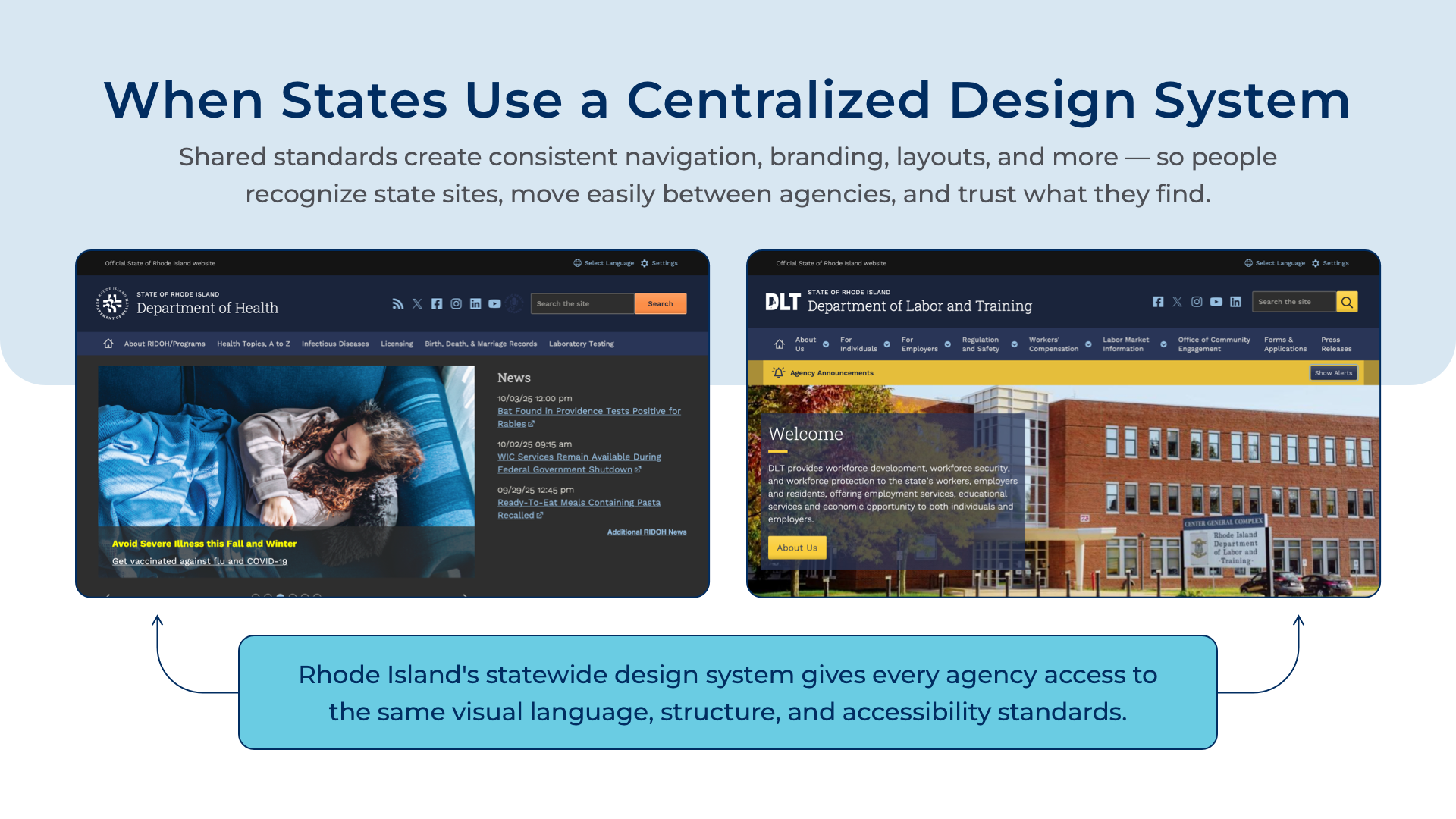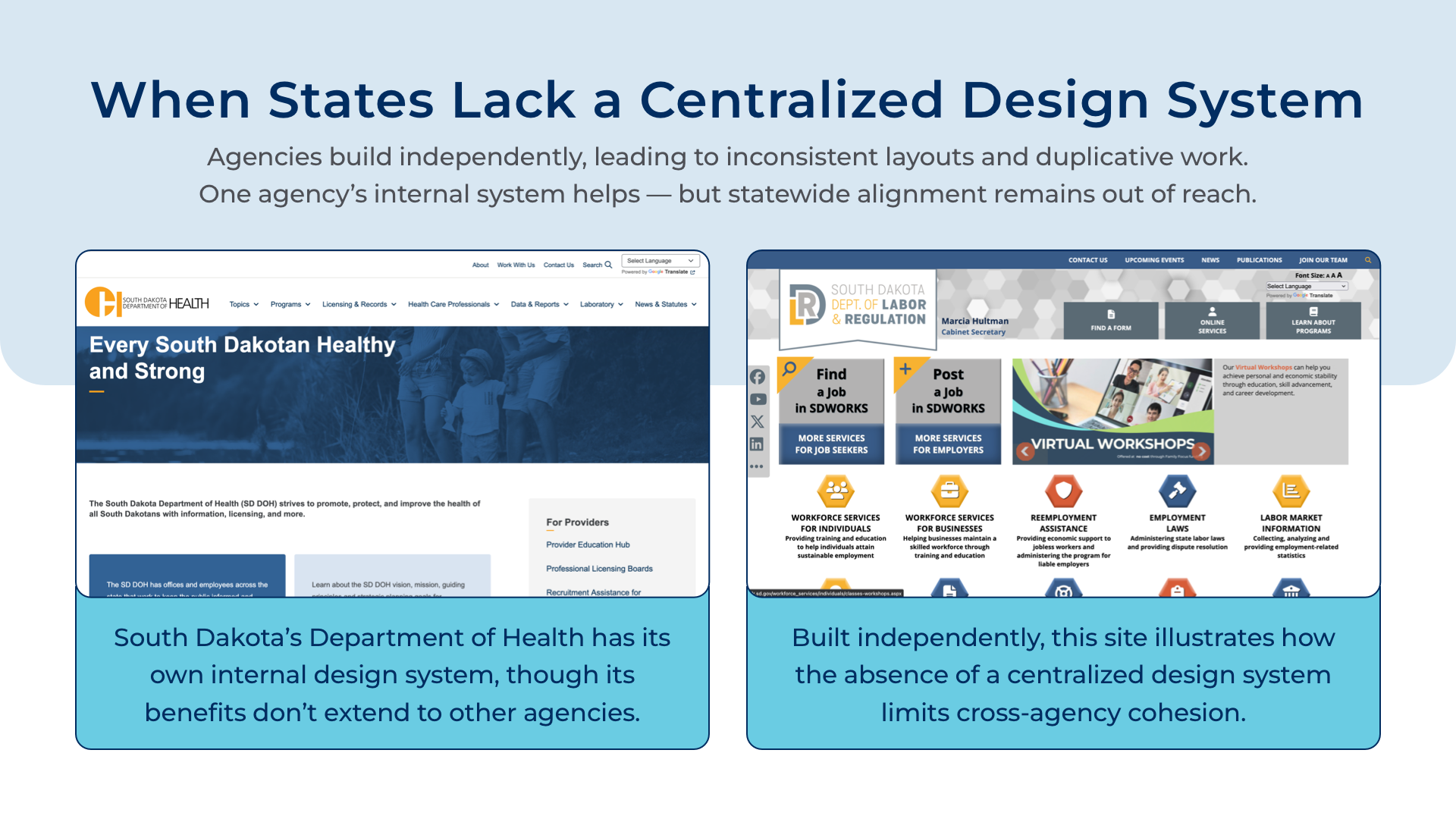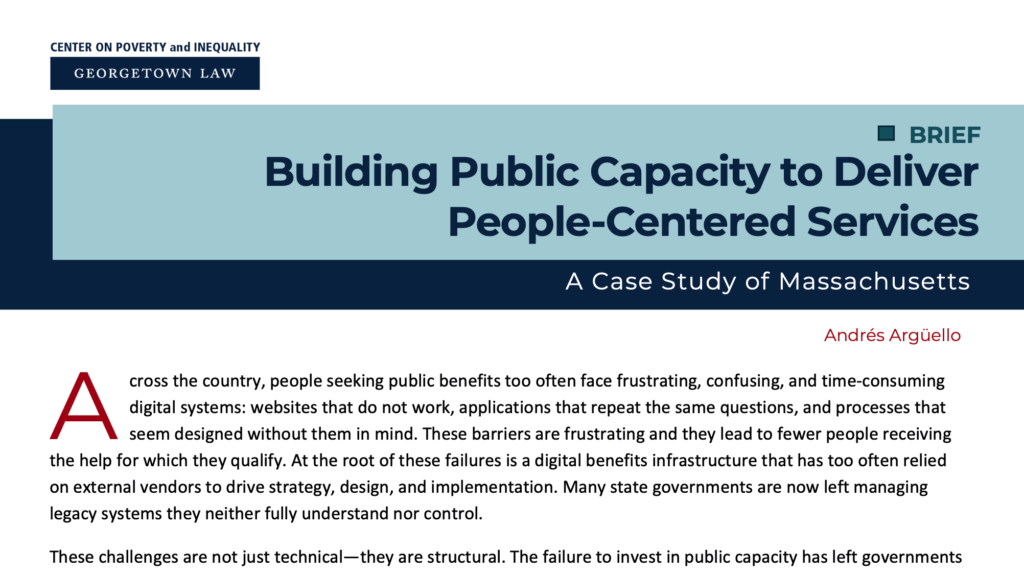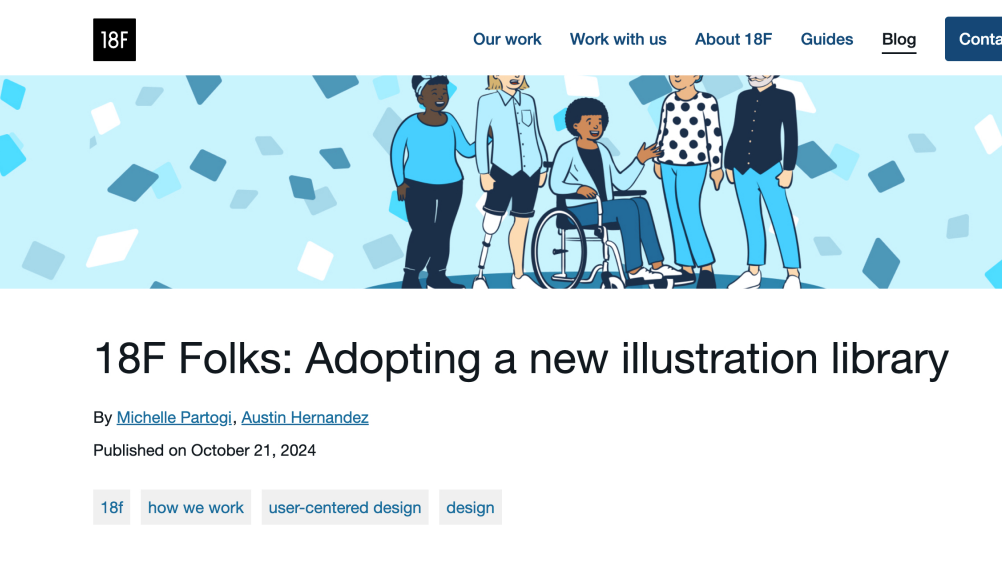State-Level Design System Tracker
Design systems are a foundational component of good government digital service delivery. This publication explores why design systems matter and includes a tracker of centralized design systems across U.S. states.
Tracking States’ Work on Design Systems
Design systems are a foundational element of good government digital service delivery. By providing a shared language, reusable components, and clear standards, design systems enable agencies to build web-based services more consistently and effectively.
To better investigate states’ work implementing design systems to streamline digital service delivery, the Digital Service Network (DSN) maintains a state-level design system tracker. Read on to learn more about the importance of design systems and explore the tracker.
Design Systems 101
Design systems are digital toolkits of reusable and modular patterns, styles, and components governed by a set of standards and principles. They help teams build digital experiences that look, feel, and function consistently. Design systems help cut down on duplicative work, streamline and speed up development, and raise the baseline quality of websites and digital services. For governments, that means less time reinventing the wheel and more time solving real problems for people.
Design systems for people-centered digital service delivery
People experience government as a whole, not a series of agencies. When people go online to apply for benefits, pay taxes, or book an appointment at the DMV, consistent digital experiences make things easier and build trust. Design systems can help build bridges between siloed government services or complex bureaucracies and the public, making it easier for people to find and understand the information and resources they need.
By embedding accessibility, plain language, and mobile responsiveness into foundational services—regardless of the delivering agency—design systems enable governments to deliver on the promise of people-centered design not just in theory, but at scale.
Some of the concrete benefits of high-quality design systems in government include:
- Shared design patterns that make services feel familiar and easier to use across different departments or agencies, reducing confusion and help requests.
- Built-in accessibility features that increase the likelihood that services work for people with disabilities.
- Reusable solutions that help cut down on errors and duplicative work, freeing up teams to tackle harder problems.
- Clear standards and guidelines that make it easier for internal staff and external vendors to build quality digital products.
Why centralization matters
It is not uncommon for state governments to have multiple live design systems used and maintained by specific agencies across the organization. While this can improve services within the siloes of these particular agencies, the lack of centralization still risks a fragmented digital experience and leaves some of the benefits of design systems on the table.
Centralization helps governments capitalize on the full benefits of design systems. Instead of each agency building and maintaining its own style guide and set of standards, a common, state-level system creates consistency across the board. This helps produce greater equity—agencies large and small, with varying budgets and capacities, can deliver high-quality digital services. This approach also saves time and money, and reduces technical and design debt. For leaders, centralization also opens the door for developing a governance structure that makes it easier to sustain and scale design practices over time.


Motivation and Research Questions
Through our work with governments across the U.S. and Canada, we have seen how shared digital infrastructure like design systems can be a force multiplier for capacity. With our research into state-level design systems, we aim to document and understand how governments across the U.S. are building and sustaining centralized approaches. Our research and engagement with practitioners in this space are guided by several key questions:
- Which states are investing in centralized design systems, and how are those systems structured?
- What benefits, challenges, and trade-offs are emerging in practice?
- How are leaders securing buy-in and encouraging wide uptake of centralized design systems?
- Which approaches are at play in the governance of centralized design systems?
- Where are the opportunities for collaboration and shared learning across states?
By addressing these questions, we hope to provide practitioners and decision-makers with the insights they need to strengthen their digital foundations and better serve the public.
Explore the Design System Tracker
To support government teams in better researching and understanding the current landscape of centralized state design systems, the DSN developed its Design System Tracker.
The tracker is a living database for those seeking to explore:
- States that have live or in-development design systems
- Key details and resources for each state’s design system, such as whether it is open-source, includes a Figma kit, and information on how development is governed.
Some states have opted into sharing a contact person for their design system work. Practitioners eager to learn more about a given state’s design system can feel free to email the point of contact directly.
Examples from the Tracker
Georgia’s Orchard Design System: Georgia’s design system includes extensive user documentation, scaffolding, and examples to help new users onboard into the system. The wide range of wraparound information on brand, style, components, and user experience makes it an easy choice to opt-in to Orchard for government users.
Iowa’s DX platform: Iowa publicly tracks uptake of its design system across agencies, which helps reduce perceived risks of first-mover disadvantage and encourages scale of use across the organization.
Pennsylvania’s Keystone Design System: Pennsylvania prominently features the state’s design principles in their documentation alongside the six foundational elements of the system. They list each available component and pair it with clear guidance for when—and when not—to use each one. A thorough style guide, coupled with accessibility guidance, makes for a clear, easy-to-use system.
Developing Your State’s Design System
If your state is in the early stages of developing—or considering—a centralized design system, exploring the tracker is a great first step to understanding how states similar in size and budget are approaching this work.
Many states in the tracker have listed a public contact person. Reach out to them for additional information on their work and approach.
If you’re ready to go deeper, email us at digitalservicenetwork@georgetown.edu. We can connect you with our Slack community of public sector design system practitioners to share promising practices and challenges.
Acknowledgements
This work was made possible in part through a collaboration with Christian Lorentzen, former user experience researcher for the State of Arizona’s Digital Solutions Office. Lorentzen’s work was foundational to the development of the tracker, and we thank him for sharing his thorough and detail-oriented research with us to build upon and share across the field.


